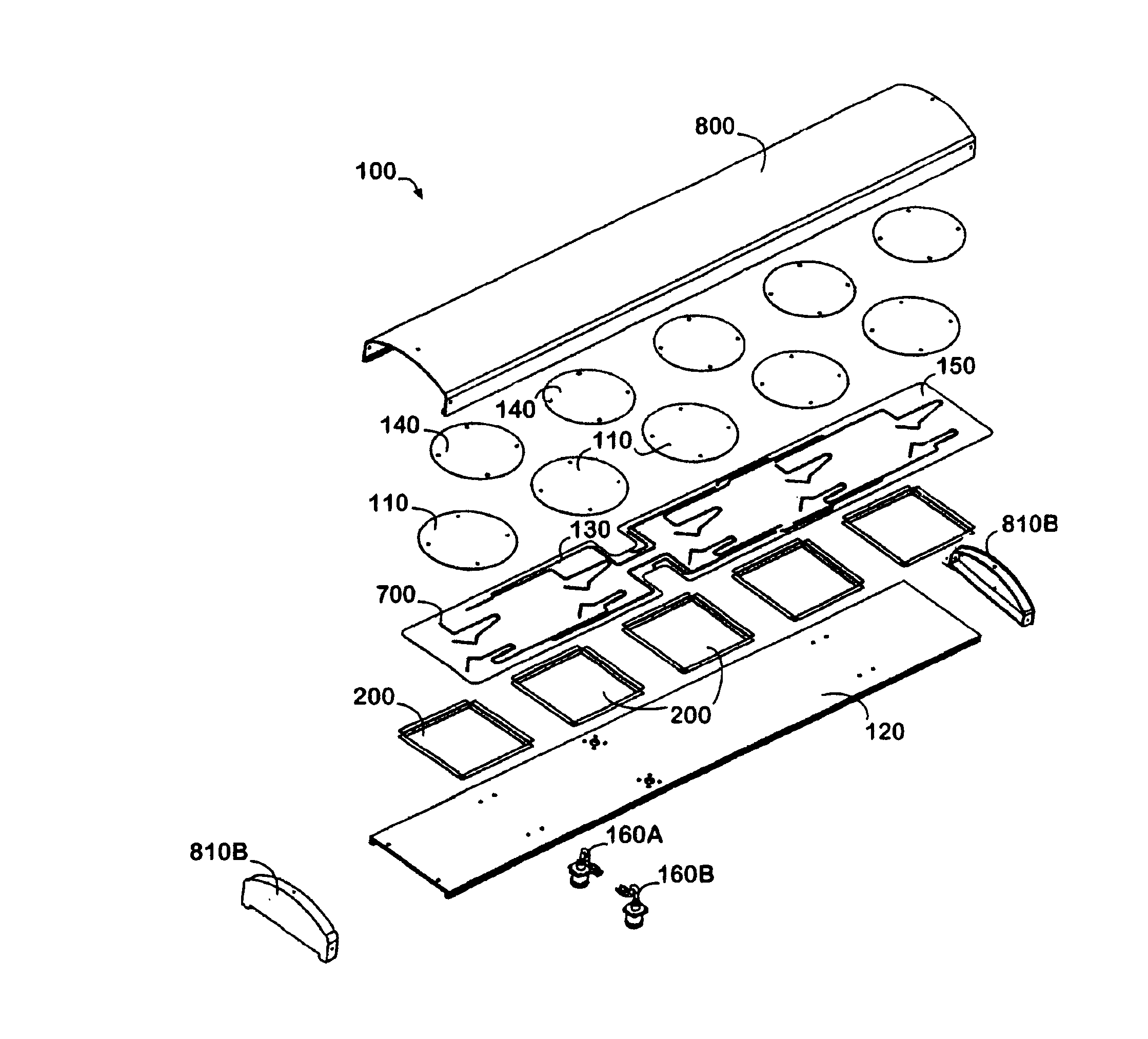Patch and cavity for producing dual polarization states with controlled RF beamwidths
a dual polarized antenna and beamwidth control technology, applied in the field of electromagnetic signals communication antennas, can solve the problems of reducing the efficiency of heat transfer function, reducing the efficiency of heat transfer, and reducing the amount of passive intermodulation (pim)
- Summary
- Abstract
- Description
- Claims
- Application Information
AI Technical Summary
Benefits of technology
Problems solved by technology
Method used
Image
Examples
Embodiment Construction
[0041]The antenna of the present invention can solve the aforementioned problems and is useful for wireless communications applications, such as personal communication services (PCS) and cellular mobile radio telephone (CMR) service. The antenna of the present invention can use polarization diversity to mitigate the deleterious effects of fading and cancellation resulting from a complex propagation environment. The antenna system can include a patch radiator, a printed circuit board disposed adjacent to the patch radiator, and plurality of slots disposed within a ground plane of the printed circuit board. The antenna further includes a cavity disposed adjacent to the ground plane of the printed circuit board and a second ground plane disposed adjacent to the cavity. The antenna system radiates RF energy having dual simultaneous polarization states and having substantially rotationally symmetric radiation patterns.
[0042]Turning now to the drawings, in which like reference numerals re...
PUM
 Login to View More
Login to View More Abstract
Description
Claims
Application Information
 Login to View More
Login to View More - R&D
- Intellectual Property
- Life Sciences
- Materials
- Tech Scout
- Unparalleled Data Quality
- Higher Quality Content
- 60% Fewer Hallucinations
Browse by: Latest US Patents, China's latest patents, Technical Efficacy Thesaurus, Application Domain, Technology Topic, Popular Technical Reports.
© 2025 PatSnap. All rights reserved.Legal|Privacy policy|Modern Slavery Act Transparency Statement|Sitemap|About US| Contact US: help@patsnap.com



